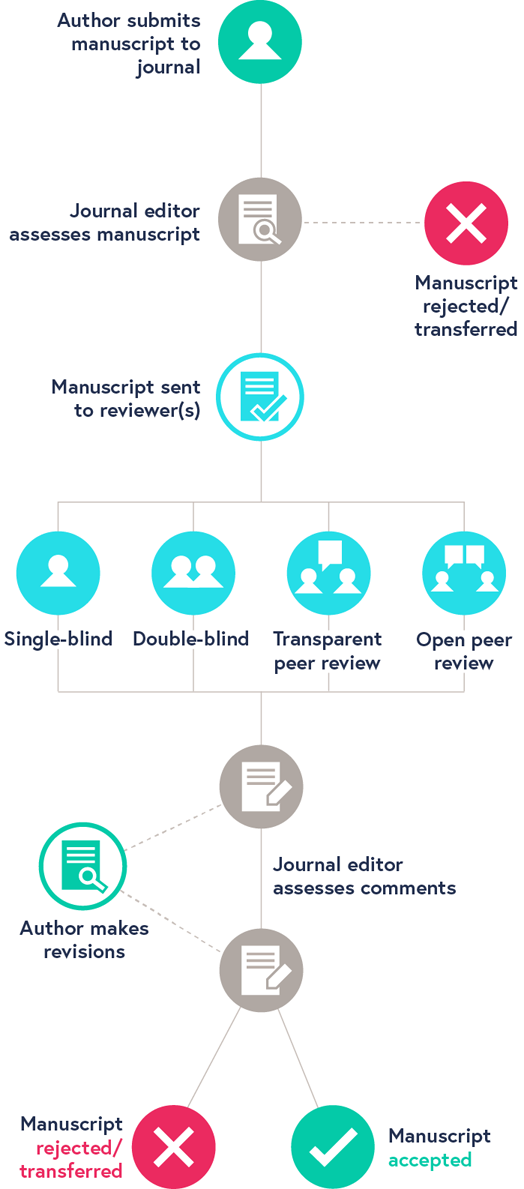Peer review is the evaluation of work by one or more people with similar competences as the producers of the work (peers). It functions as a form of self-regulation by qualified members of a profession within the relevant field. Peer review methods are used to maintain quality standards, improve performance, and provide credibility. In academia, scholarly peer review is often used to determine an academic paper's suitability for publication. Peer review can be categorized by the type of activity and by the field or profession in which the activity occurs, e.g., medical peer review.
How peer review work?
When a manuscript is submitted to a journal, it is assessed to see if it meets the criteria for submission. If it does, the editorial team will select potential peer reviewers within the field of research to peer-review the manuscript and make recommendations.There are four main types of peer review used by BMC:
Single-blind: the reviewers know the names of the authors, but the authors do not know who reviewed their manuscript unless the reviewer chooses to sign their report.
Double-blind: the reviewers do not know the names of the authors, and the authors do not know who reviewed their manuscript.
Open peer: authors know who the reviewers are, and the reviewers know who the authors are. If the manuscript is accepted, the named reviewer reports are published alongside the article and the authors’ response to the reviewer.
Transparent peer: the reviewers know the names of the authors, but the authors do not know who reviewed their manuscript unless the reviewer chooses to sign their report. If the manuscript is accepted, the anonymous reviewer reports are published alongside the article and the authors’ response to the reviewer.
Different journals use different types of peer review. You can find out which peer-review system is used by a particular journal in the journal’s ‘About’ page.
Why do peer review?
Peer review is an integral part of scientific publishing that confirms the validity of the manuscript. Peer reviewers are experts who volunteer their time to help improve the manuscripts they review. By undergoing peer review, manuscripts should become:
More robust - peer reviewers may point out gaps in a paper that require more explanation or additional experiments.
Easier to read - if parts of your paper are difficult to understand, reviewers can suggest changes.
More useful - peer reviewers also consider the importance of your paper to others in your field.
For more information and advice on how to get published,

The peer review process can be single-blind, double-blind, open or transparent.
You can find out which peer review system is used by a particular journal in the journal's 'About' page.
N. B. This diagram is a representation of the peer review process, and should not be taken as the definitive approach used by every journal.
You can find out which peer review system is used by a particular journal in the journal's 'About' page.
N. B. This diagram is a representation of the peer review process, and should not be taken as the definitive approach used by every journal.
